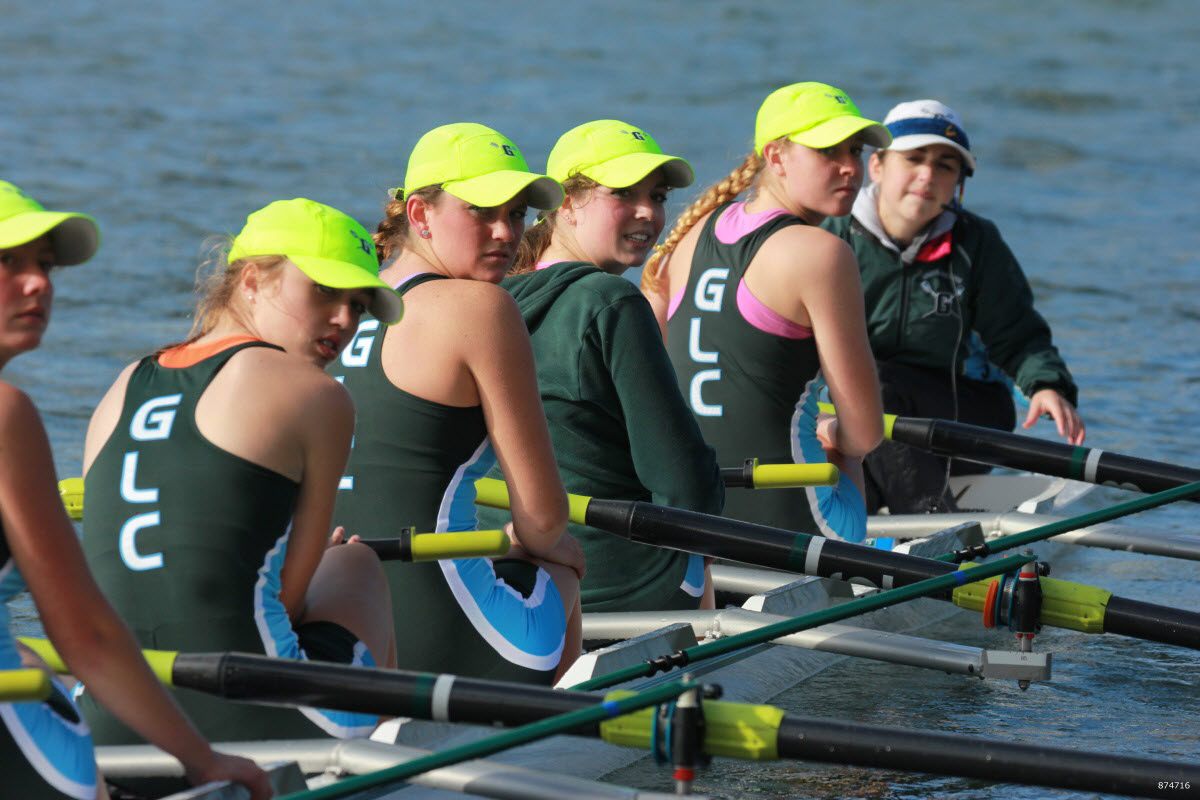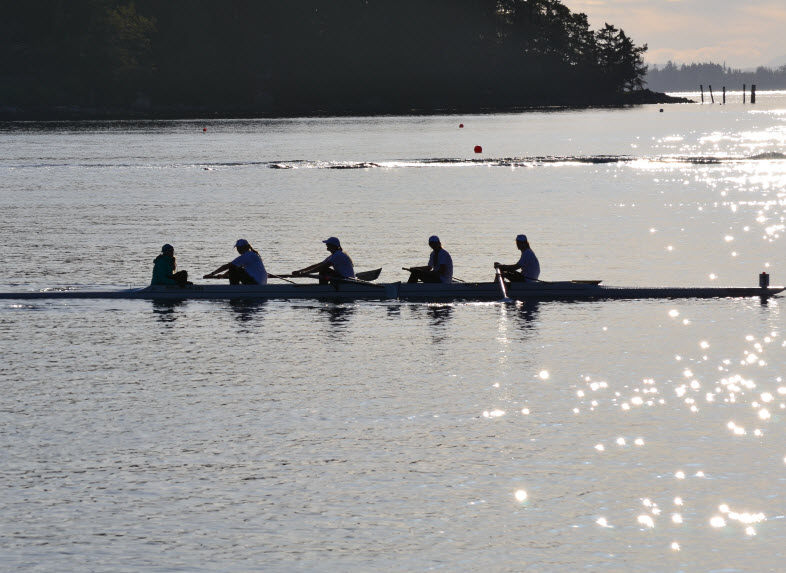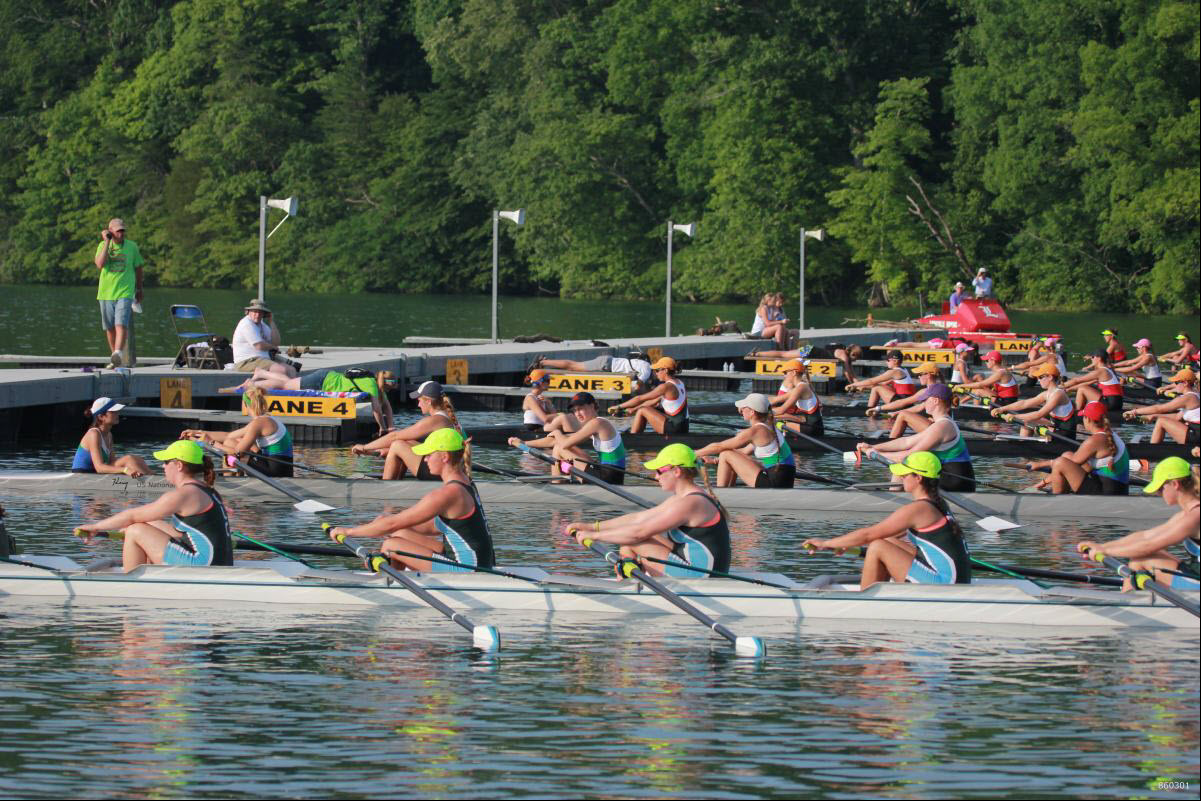
As my 13-year-old son, Nolan, approached, I could see he was tired, sweaty, and maybe a little sore. He had just completed his first rowing race, an almost two-mile grind on the Snohomish River.
His boat, the Mt. Baker Crew junior men's novice 8+ (the "8" indicates the number of rowers and the "+" indicates that the boat also carried a coxswain), had done okay but not great, finishing somewhere in the middle to the bottom of the pack, but I could see he was still happy.
"How'd it go?" I asked. "That's the most fun I've ever had doing a sport," he replied.
This was a good sign. The previous June I had signed him up for summer novice rowing in Seattle. Like many kids his age, he was not that interested in trying a new sport. But I had a feeling rowing would be a good fit, so my wife and I told him he had to try it. Now, by early October, it was his favorite sport.
It was a gratifying story for our family, but also one that I suspect has been playing out for Northwest teens and young adults perhaps as far back as 1893, when the first rowing shell arrived in King County.
A rich Puget Sound history
Riding a slow but steady wave of interest, rowing had grown in popularity since the first Harvard-Yale Regatta in 1852 (the first U.S. intercollegiate competition ever, in any sport), spreading from colleges, high schools, and athletic clubs in the Northeast to lakes and rivers in the Midwest and finally the waters of the West Coast.
By 1899 the University of Washington had begun building its program and in 1903 was good enough to beat the University of California in its first intercollegiate regatta.
University of Washington rowing has thrived ever since, producing 26 Olympic medalists since those early years. With a rowing powerhouse nearby, local youth programs, such as Green Lake Crew, Everett Rowing Association and Mt. Baker Crew, started to flourish. Over the years these programs have produced more than their share of regional and national champions, high-caliber collegiate rowers, and even Olympians.
No "stars" in crew

That's not to say all this success has come easily. In talking to local coaches, they agreed that pursuing rowing seriously takes a lot of commitment, accountability, time management, and effort, but that the rewards are very special.
One constant theme is the singular sense of teamwork rowing develops. "Members of a rowing team learn that it is each member's responsibility to help the other individuals in the boat achieve their goals, and that only by working together can they be achieved," says Briana Schulte, varsity girls coach at Pocock Rowing Center.
The result, says Simon Williams, novice boys coach for Sammamish Rowing Association, is that, "There are no 'stars' in a crew."
Along with the unique experience of the sport, area coaches find that rowing provides some valuable life lessons, such as goal setting, collaboration, and effective communication. This may explain why it is often seen as providing a boost when it comes to college applications.
"I think admissions officers tend to see rowers as having skills such as discipline, teamwork, and a willingness to challenge themselves," says Jason Coffman, acting senior program specialist for Mt. Baker Rowing and Sailing Center, adding, "Rowers have a reputation, deserved or not, as excelling in the classroom as well."
Some of that perception may lie in the sport's Ivy League pedigree, and the expensive equipment and waterfront access required only adds to what some may view as an air of exclusivity or elitism. The reality, at least locally, is somewhat different, with a number of clubs and organizations offering financial assistance, transportation for under-served youth, in-school programs, and other outreach efforts to make rowing accessible to as many kids as possible.
How to get started

If your child would like to try rowing out, local clubs all row year-round, so there are usually multiple opportunities to get started. Interested parents can also check with local clubs for free "Learn to Row" days. Usually offered several times a year, these sessions let kids get a taste of the sport over the span of a few hours without committing to a full season.
Most local teams focus mainly on what is called sweep rowing, where each rower pulls one oar with two hands (as opposed to sculling, where rowers have one oar in each hand). For juniors, sweep boats typically race in 2- (the "-" indicates no coxswain), 4+, and 8+ configurations (but may train in others), also known as the "pair," the "four," and the "eight," with the varsity 8+ being the top boat for most teams.
However, some clubs (notably Seattle Rowing Center) embrace a more European approach that uses sculling to teach the fundamentals. (Sculling boats come in 1x, 2x, and 4x+ configurations -- also known as the single, double, and quad -- where the "x" indicates a sculling shell.)
Beginners typically start with on-land boat handling (rowing shells are expensive and fragile, so proper handling is crucial) and basic stroke instruction on rowing machines. On-water instruction usually takes place in an "eight" (for sweep rowing) or a quad (for scullers), since larger boats are easier to balance.
The main racing season is in the spring, so January is a great time to start looking into what is available. Most programs require novices to be at least 12 or 13, and have separate programs for beginning and experienced rowers, but each club is slightly different. Swimming ability is not required, but passing some sort of float test usually is (although some programs allow young or recreational rowers to wear life jackets).
As for what kind of kids do well, height, athleticism, and aerobic capacity are all advantages, but the mental side can make a big difference, especially for junior rowers.
"A willingness to suffer is one of the biggest personal attributes a rower must have," says Coffman. "Rowing hurts when you do it right."
While size helps, many clubs offer lightweight programs (150 pounds or less for junior boys, 130 or less for girls), in addition to heavyweight squads.
Coxswain = leadership opportunity
And if your child is a big personality in a small body, he or she might consider becoming a coxswain (pronounced "cox'n"). One of the most unique jobs in sports, the "cox" is not equipped with an oar but is rather the captain of his or her boat, in charge of everything from getting it in and out of the water, executing the race plan, providing in-race tactical adjustments and coaching cues, as well as extracting maximum performance from the crew.
"A great coxswain isn't simply someone who is 'bossy,'" says Schulte. "A great coxswain knows when to motivate, when to push, when to praise, and when to demand more," she says.
Coxes are a vital part of any crew's success, and coxing provides one of the best opportunities for a teen to develop leadership skills, while for many kids it opens up a whole new world of athletics where small stature is actually an advantage. (To get a taste of what coxing a race is like, this recording does a brilliant job.)
While my own son is still years away from college, I have already seen many of the other rewards of rowing -- the camaraderie, the discipline, the goal setting, and most important, the goal achieving -- come through in his life.
But most satisfying is that he seems to have found something he's passionate about. I knew he was hooked when he told me after a particularly hard practice, "It sucks, Dad. But I love it."
Local rowing clubs
Seattle
Mt. Baker Rowing and Sailing Center
mount.baker@seattle.gov
(206) 386-1913
Offers novice and varsity programs for athletes age 13 to 19. Spring session for novice and varsity start Jan. 29. Financial aid is available.
Pocock Rowing Center
info@pocockrowingcenter.org
(206) 328-0778
Offers middle-school recreational rowing for grades 6-8 (spring sessions start Feb. 24 and 25) and competitive junior team for grades 9-12 (spring session starts Feb. 10). (Also see the Rowing Outreach section.)
Seattle Rowing Center
info@seattlerowingcenter.com
(206) 216-2255
Offers middle-school rowing team for grades 6-8 (through June 13) and junior racing team for grades 8-12 (through June).
Green Lake Crew
jason.frisk@seattle.gov
(206) 684-4074
Offers novice and varsity programs for athletes age 13 to 18. Spring session for novice and varsity starts Jan. 27. Financial aid is available.
Lake Union Crew
info@lakeunioncrew.com
(206) 860-4199
Offers novice and experienced programs for athletes age 12 and up. Spring session starts after Feb. 7. Financial aid available (see Rowing Outreach section).
Eastside
Sammamish Rowing Association
info@srarowing.com
(425) 653-2583
Offers competitive (novice and varsity) and recreational programs for athletes age 13 to 18. Spring session starts after Jan. 23. Financial aid available.
North Sound
Everett Rowing Association
admin@everettrowing.com
(425) 345-5138
Offers a middle school recreational team for 7th to 9th graders age 12-14 (first spring session begins Feb. 9) and a high school competitive team (novice and varsity) for 9th to 12th graders (spring session begins Feb. 3). Financial aid is available.
South Sound
Olympia Area Rowing
oarjuniorteam@gmail.com
(360) 888-3307
Open to grades 9-12 and rising 8th graders during the summer. Spring session starts Feb. 3.
Rowing Outreach
George Pocock Rowing Foundation
(206) 328-0778
info@pocockfoundation.org
Row to the Future/Rainier Valley Rowing
director@rowtothefuture.org
(206) 328-0778
Financial aid available
Lake Union Crew Outreach Foundation
outreachfoundation@lakeunioncrew.com
(206) 860-4199
Financial aid available
Photo credits: Courtesy of Green Lake Crew, (first and third) Josh Parks (second)










